The plants filter out harmful compounds in the air, making it much healthier to breathe.
The good news is that these plants are easily found, and you can attach them to your home to accommodate yourself and your family with air that is completely purer and free from harmful agents. Having a healthy home will improve your life and bring more prosperity to your home.
These plants will filter out toxic chemicals like formaldehyde and benzene and present you with oxygen simultaneously.
I listed the 9 best indoor plants that improve air quality. Enjoy.
Table of Contents
9 Best Air-Purifying Indoor Plants To Improve Air Quality
1. Aloe (Aloe Vera or True Aloe)
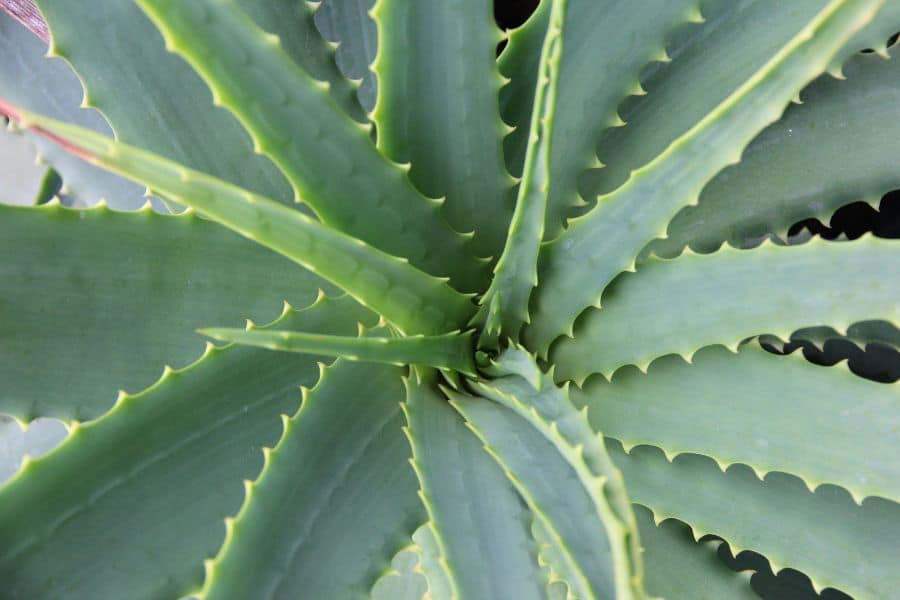
Insight.
Aloe is a genus including over 500 species of lush flowering plants. The most popular is Aloe vera, also called “true aloe.”
Most Aloe plants have long, thick, fleshy leaves. These leaves have medicinal qualities. Aloe blossoms are tubular, usually yellow, orange, pink, or red. Aloe can grow three feet high for a big impact indoors. Smaller classes like the aloe vera work great in small, sunny indoor spaces.
Care.
Aloe can grow under practically any condition. They grow equally well indoors and outdoors with minimal care, but you must pick a place where your plant will get plenty of light.
But remember that too much straight sunlight can cause the plant to dry out, and leaves can become brown. So water aloe deeply, then let the soil dry at least 1 to 2 inches deep between waterings.
Tips.
There are plenty of products made from the jelly-like substance inside aloe vera leaves – shampoos, gels, beauty products, health supplements, etc. All these products should be apart. But what can you do with your Aloe in your home?
You can use the leaves for healing properties. Just remove one of the leaves from a plant and slice it open along its length. Then both press out the jelly-like material and apply it to the affected part or lay the entire opened leaf side straight over the affected part and bandage it carefully in place.
2. Pothos (Golden Pothos, Devil’s Vine)
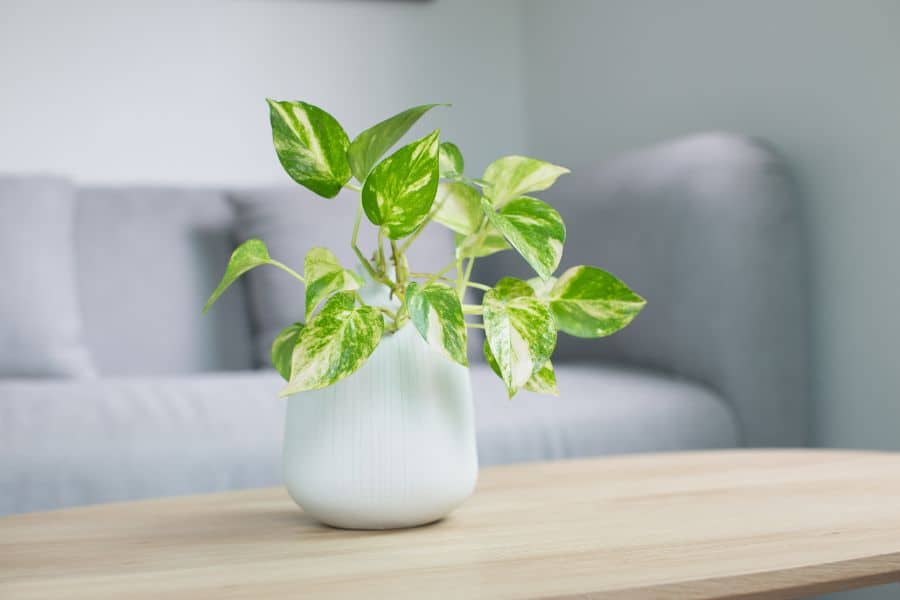
Insight.
This indoor plant is high on the list of plants that can assist in purifying indoor air. Pothos can absorb and remove toxins like formaldehyde from materials in the house like carpet.
Pothos leaves are pointed, heart-shaped, and green or variegated in white, yellow, or lighter green. Pothos has white flowers. Indoor pothos can reach 30 ft.
Care.
Pothos is the easiest houseplants to grow. They don’t need much sunlight and water. Pothos like to have their soil dry out entirely between waterings.
Add water when it starts to droop. Don’t wait till the leaves begin to shrivel, or you will lose some leaves.
Pothos is usually pest-free, but they can get filled with gritty bugs. The easiest method to get rid of them is to touch them with an alcohol-moistened cotton swab.
Tips.
Pothos grows anywhere. Allow it elegantly hang from a basket, crawl its way throughout the expanse of a room, cover a trellis, or just put it onto a table. It does just as well on its own as it does in a combined planting.
You can be creative with a Pothos. Some indoor plants will climb and drag as quickly and as far as pothos.
Train it to grow across a wall by adding the vine to small hooks or hidden nails. Then, let it drop from entertainment centers, bookcases, and high window ledges.
3. Spider Plant (Spider Ivy, Ribbon Plant)
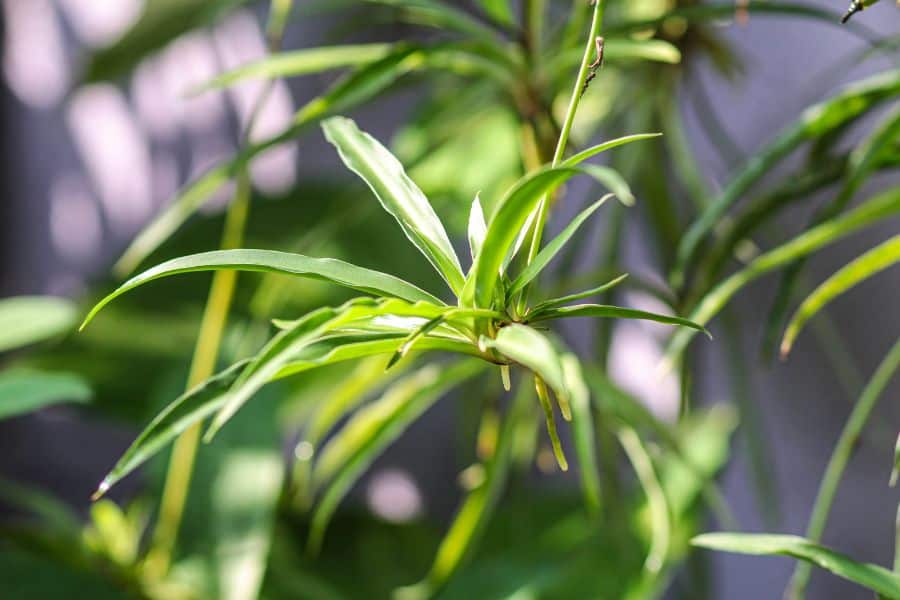
Insight.
The spider plant is trendy and easy to grow. This plant can grow in a broad spectrum of conditions.
The spider plant is so-called because its spider-like flowers hang down from the mother plant like spiders on the web.
Spider plants come in plenty of varieties and work great as hanging plants.
Care.
Caring for spider plants is easy. Water them well but do not let the plants become too wet, leading to root rot.
Spider plants prefer to dry out some between waterings. Room temperatures should be 40 to 85 degrees Fahrenheit to keep them thriving. Put spider plants in an east, west, or north windowsill any time of the year.
Tips.
When less than a year old, Spider Plants may produce little white flowers during the summer. Spider plants look wonderfully lovely in a hanging basket.
Keep spider plants on your desk to reduce indoor pollutants.
4. English Ivy (Hedera)
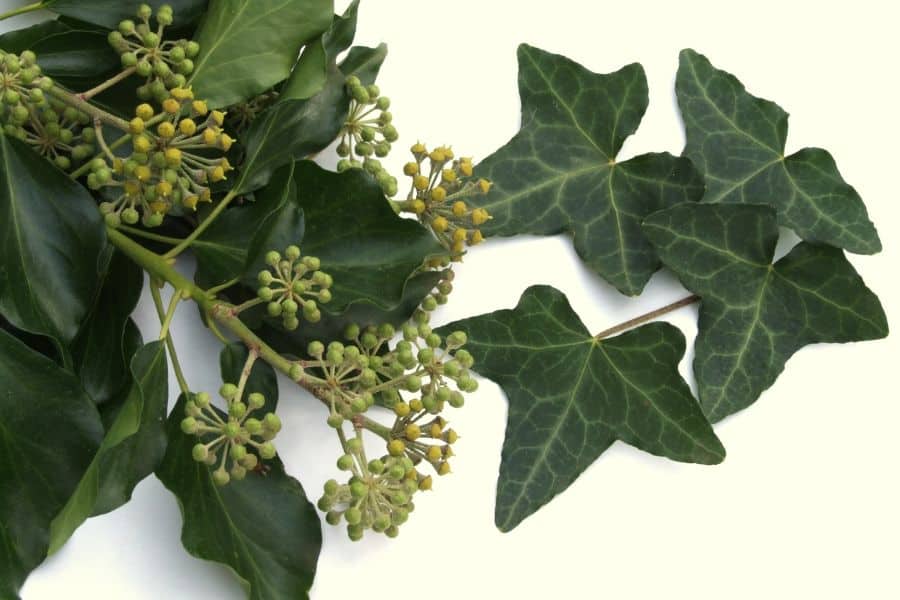
Insight.
English ivy is the most popular type of ivy. It can grow long and lush and bring a bit of the outdoors inside.
Growing ivy indoors is easy as long as you know what makes an ivy plant happy. For example, English ivy reduces airborne fecal element particles.
It has also been shown to filter out formaldehyde in some household cleaning products.
Care.
Ivy’s care is not hard. The most significant part of indoor ivy plant care is light. Ivies need bright light. Without enough light, inside ivy plants will become leggy and sickly looking.
Ivies prefer the dry side, so let the soil dry out before you spray your ivy plant.
Also, you have to wash your ivy regularly to get rid of dust and pests. Finally, Ivy prefers to be held on the comfortably cool side.
Night temperatures of 50° to 55° and day temperatures of 68° to 72° are ideal.
Tips.
Ivy can take advantage of the climbing ability of these plants to use them to cover a wall.
Keep in mind that growing such plants on walls may or may not be a good idea, depending on the wall’s construction, your ability to fix the wall as needed, etc.
Ivy is an invasive plant, so choose an area with plenty of room to grow and not conflict with other plants.
5. Jade Plant (Friendship Plant, Money Plant, or Silver Dollar Plant)
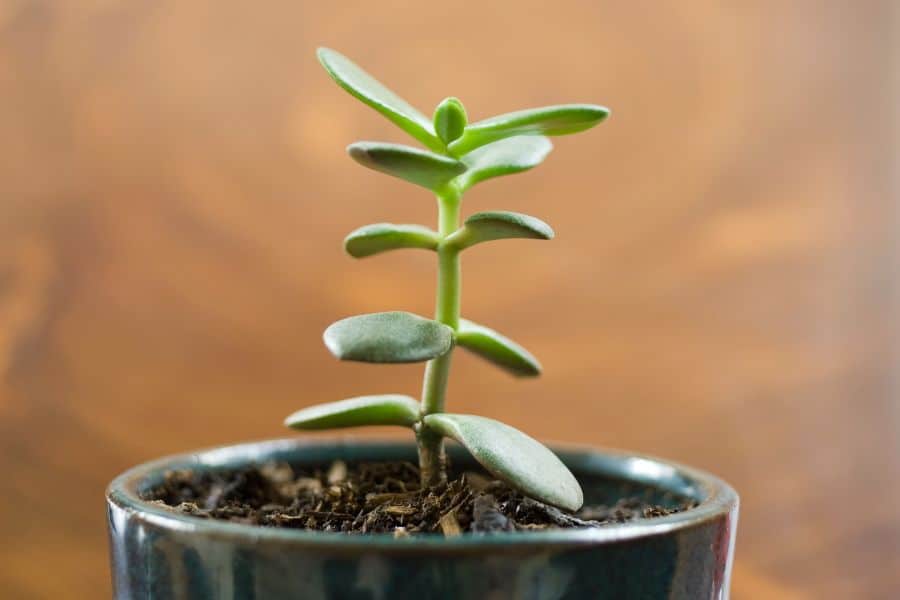
Insight.
Jade plants have a shrub-like structure with thick sections and flat, oval-shaped leaves. The plants are fairly flexible and easy to grow.
Jade plants can grow to a height of 24 inches when indoors. Many people have jade plants in their homes because they are considered to be symbols of good luck.
Care.
Jade plants require a medium-light daily for several hours. The plant favors room temperature but can be slightly cooler in the winter.
Need to allow to dry between waterings, holding the soil fairly dry. During the winter, you can water less, but do not allow it to over-dry.
Tips.
To persuade Jade plants to flower, grow the Jade in a tiny pot and hold back the water. Also, cooler temperatures in the winter promote blossom.
There may be problems with mealybugs disappearing under leaves. Use a splash bottle of water or insecticidal soap to remove the bugs.
6. Rubber Tree (Rubber Plant)
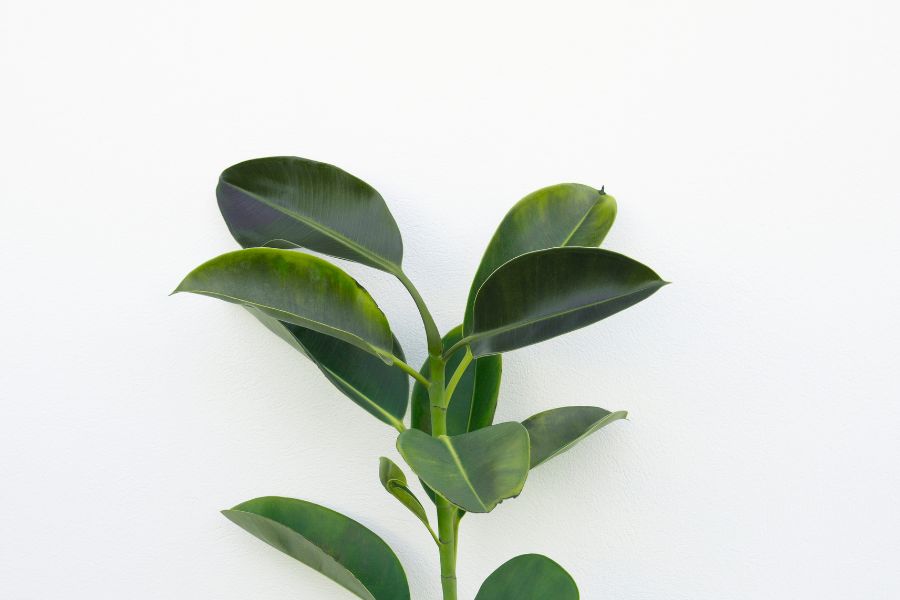
Insight.
The rubber tree or plant is a popular houseplant. These plants can grow up to 50 feet tall. Rubber plants have big, thick, shining green leaves. New leaves have a rosy-colored cover.
Care.
Rubber trees require little care. Rubber tree requires bright light but prefers indirect light that isn’t too hot.
Some recommend placing it near a window that has transparent curtains. This provides plenty of light, but not too much.
You should soak this plant with room temperature water. Add water to the pot till it pours from the base. Use rainwater or distilled water if possible.
Let the soil dry before watering. Keep the rubber plant in temperatures above 55ºF.
Tips.
To increase new leaves on a current rubber tree plant cut a slit in the joint where a leaf came off. This will allow a new leaf to grow quicker.
Remove any yellow or dead leaves as soon as possible. Plant leaves collect dust – wipe them with a damp cloth.
As you read, the plant will grow big, so you need to transplant the rubber plant into a new pot. It should be just a few inches wider and deeper than the old one.
7. Peace Lily (Spathe Flower, White Sails)

Insight.
Peace Lilies are popular indoor plants. They are easy to maintain.
They can grow up to 16inches. Peace Lilies have dark green leaves and beautiful pure white flowers.
These plants are great room brighteners and excellent at cleaning the air in their room.
Care.
Place your Peace Lily close to a window in a warm room away from direct light.
If you live in a tropical location, you can keep your plant outside year-round. Keep your Peace Lilies soil moist, but do not overwater.
If you want flowers to appear, but none have, move the plant to a darker room.
Tips.
In NASA studies, Peace Lilies were found to help control formaldehyde, benzene, and carbon monoxide from indoor air.
8. Snake Plant (Saint George’s Sword, Mother-In-Law’s Tongue)

Insight.
The snake plant (also known as mother-in-law’s tongue) has long, pointed, upright leaves that remind snakes. It is green in color but sometimes has yellow points.
The snake plant is a succulent plant, which means the leaves hold lots of water, similar to a cactus.
Care.
Keep the Snake plant in indirect sunlight. Don’t water it too much (water every two to three weeks) – let the plant dry out some between waterings. Room temperature water should be used.
Tips.
The snake plant is one of the best for filtering out formaldehyde.
Use it in your bathroom – it will grow with low light and hazy, humid conditions while improving filter out air pollutants.
Also, an excellent place for this plant is a bedroom. This plant releases oxygen at night.
9. Ficus (Weeping Fig, Benjamin Fig)
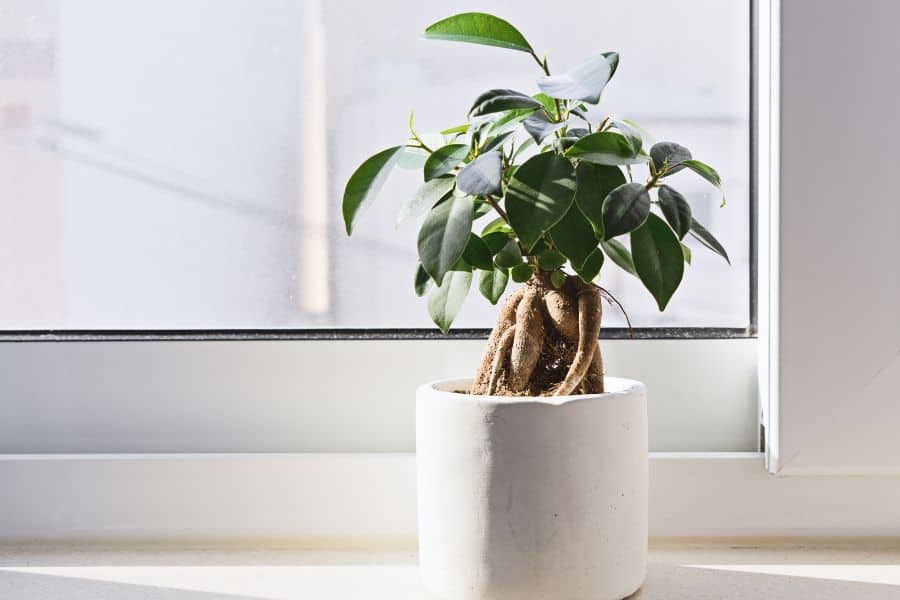
Insight.
Ficus looks like a tree with a single trunk. The ficus genus of beautiful plants is a variety of species that are very popular for growing indoors.
Their leaves can be either dark green or bright. They are not difficult plants to grow. The two most famous are the weeping fig (small tree) and the rubber plant (much larger tree).
Care.
Ficus should be placed in bright light with indirect sunlight. The three types do not like to be over-watered. Read the directions for each species. Most thrive well in average temperatures of 60 – 75°F.
Tips.
A common problem for a ficus is dropping leaves. That is a reaction to stress, from low humidity, too little light, drafts, pests, etc.
If your focus leaves are dropping, go through the checklist of proper ficus tree care and fix anything you find wrong.
What Other Plants Are Good For Improving Air Quality?
There are quite many plants that are good for improving indoor air quality. Not counting the 9 best I just described, here are a few others you might consider.
- Areca Palm – From Madagascar, this plant requires moist, well-drained soil and can grow up to 10 feet tall indoors.
- Philodendron – Requires well-drained and airy soil, and better if the pH level is between 6and 6.5. It should be placed in indirect sunlight. Philodendrons can grow up to 20 feet tall.
- Dracaena – Best to grow it in a bit acidic 6-7pH, well-drained soil. The plant likes bright places but not direct sun. Dracaenas can grow up to 10 feet tall.
- Boston Fern – needs rich, loamy soil and must be drained well. It prefers higher humidity and indirect sunlight. It is quite a small plant and grows 1-3 feet tall.
- Chrysanthemums – as well as other plants, needs well-drained soil. It is a bit harder to grow because too dry or too wet soil will kill it. It requires a sunny place.
- Bamboo palms – like moist soil, but it must be well-drained. Avoid placing it in direct sunlight; it likes shade better. Size varies but can grow up to 12 feet tall.
- Chinese evergreen (Aglaonema) – like acidic, moist, well-drained soil. It comes from the tropical part of Asia and needs indirect sunlight. It can grow 1-2 feet tall.
Do Plants Help With Indoor Air Pollution?

According to lung.org, indoor plants can clean the air. They can remove harmful gases. But to clean the air using plants, you need a ton of them.
Also, plants can even decrease air quality if maintained incorrectly – the soil can grow bacteria, pesticides, and other contaminants and release them into indoor air.
So you need to maintain your indoor plants and take care of the other things to keep the indoor air fresh and clean. Keep pollutants out of the air, ventilate rooms, and use air purifiers.
What Else People Frequently Ask About Indoor Plants
What Is The Best Indoor Plant For Oxygen?
An experiment where plants were tested in the closed chamber at 77 degrees Fahrenheit, 78-85% relative humidity, and a CO2 level of 450 ppm, which equals the excellent indoor air quality, showed that the pothos plant produced the most oxygen.
On average, plants reduced CO2 from 450 to 330-370 ppm. But I couldn’t find experiments where plants were tested in worse conditions. That could be good because indoor air CO2 amounts are usually worse.
How Many Plants Do You Need In a Room To Clean The Air?
It depends on your plant, how big it is, how large, and how many leaves it has. The bigger the plant is, the better. But on average, two large plants in 100 square feet of room is enough.
But keep in mind that those are not significant and measurable differences. Moreover, that is combined with ventilation, home cleaning, and other activities.
If you want to clean the air with closed windows only using indoor plants, you will need 10-100 plants for every 100 square feet to increase indoor air quality significantly.
What Is the Best Plant To Have In Your Bedroom?
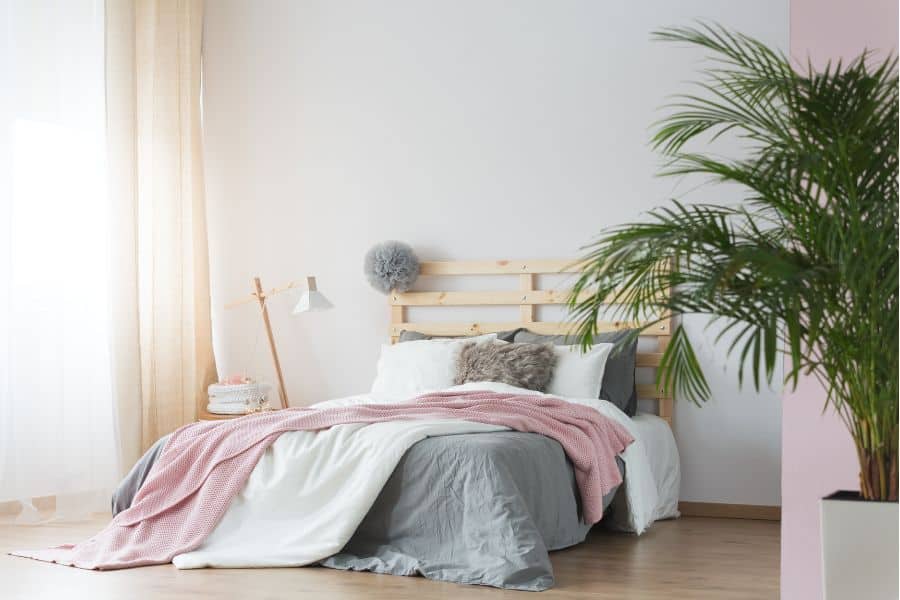
There are many suitable plants for bedrooms, for example, English ivy, golden pothos, spider plant, rubber plant, and others.
It is better to have plants in the bedroom than not. Plants will help to purify the air and reduce stress.
Do Plants Help With Dust?
Yes, plants help with dust, but the amount is insignificant. If you have a plant with large leaves, dust will collect on them, and you will have to wipe them off.
Final Word
Indoor plants will keep you happier, your mood, and your air healthier. So it is a win-win situation.
Indoor plants not only look good and smell good, but they also improve overall air quality if maintained correctly. So go ahead and purchase a few for your home now.


